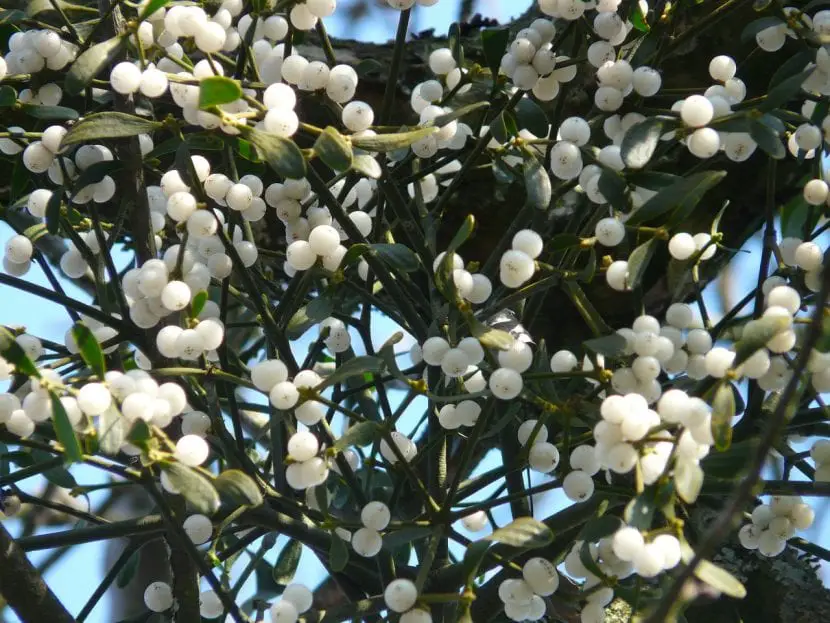
Today we are going to talk about a very popular plant in the Christmas epic. It’s about the mistletoe. His scientific name is Viscus album and it is a semi-parasitic plant, that is, it lives through another living being. It belongs to the Lorantáceas family.
Do you want to know more about the mistletoe and its legend?
Mistletoe characteristics

Mistletoe has jointed and evergreen stems. It has a somewhat peculiar way of life that we will see below. The stems are divided into scattered branches without any type of pattern and are divided by knots with some spikes. The leaves are plump and fleshy and has both male and female flowers yellow. When the mistletoe is adult it can reach up to a meter in height.
Along with fir, holly, and poinsettias, mistletoe is one of the most famous christmas trees. It is semi-parasitic because it grows on the branches of some deciduous trees such as poplars and apple trees, although they also do so in some pines. This plant takes advantage of the nutrients of the tree in which it is housed to feed itself and parasitizes it.
When their flowers fertilize, they produce fruits in the form of small berries that, at first have a green color and later, when they mature, they acquire a more pink and white color. Inside it has a viscous substance and they are not edible by people. It is the birds that, in late autumn, feed on these berries and swallow their seeds. Once the bird has consumed it and defecates it, the seeds disperse and spread, increasing their area of distribution. When the defecated seeds fall, they are caught with a small filament like a «rosary» and take root in the branches of the trees that later it will parasitize to grow.
Mistletoe is a species from the Iberian Peninsula. Although it is not a tradition to use mistletoe as an ornamental plant, it is true that more and more people are using this plant as a Christmas decoration inside the houses.
Legends related to mistletoe

Legends say that mistletoe has magical powers because it is a plant that it does not come from heaven or earth, since the roots are not in the ground, but neither does it stay in the air. The mistletoe is maintained thanks to the tree it parasitizes.
In winter, food is scarce in ecosystems and animals are more affected by the lack of food. However, mistletoe provides food for many birds who are grateful to be able to find this plant.
Currently you can find the mistletoe already cut in some Christmas markets, but in ancient times cutting the mistletoe was a ritual. Legend has it that mistletoes most valuable were those that grew on the oaks and that, in order to cut it, they had to ask the plant for permission, cut it at once, when the full moon lasted six days and the plant could not touch the ground, or else they would suffer from evil for the rest of their lives.
Another tradition that is told about the mistletoe is the one that says that if a woman gets a kiss under him on Christmas EveYou will be able to find the love you are looking for or you will keep the one you already have for the rest of your life. If a couple passes under a mistletoe, they will have to kiss if they want luck to be with them.
Because beggars in the XNUMXth century asked for money at Christmas with mistletoe in hand, this plant has become more famous at this time of year.
Where to find mistletoe
In Spain, this plant is sold in twigs with its fruits stored in small bags during the Christmas season. It is used as a symbol of good luck. The tradition is followed as long as they are given around Christmas. By December 13everyone should have a mistletoe on their doorstep to eliminate all the evils accumulated and retained by the previous mistletoe. The new one who will replace it, will take care of protecting us the following year.

